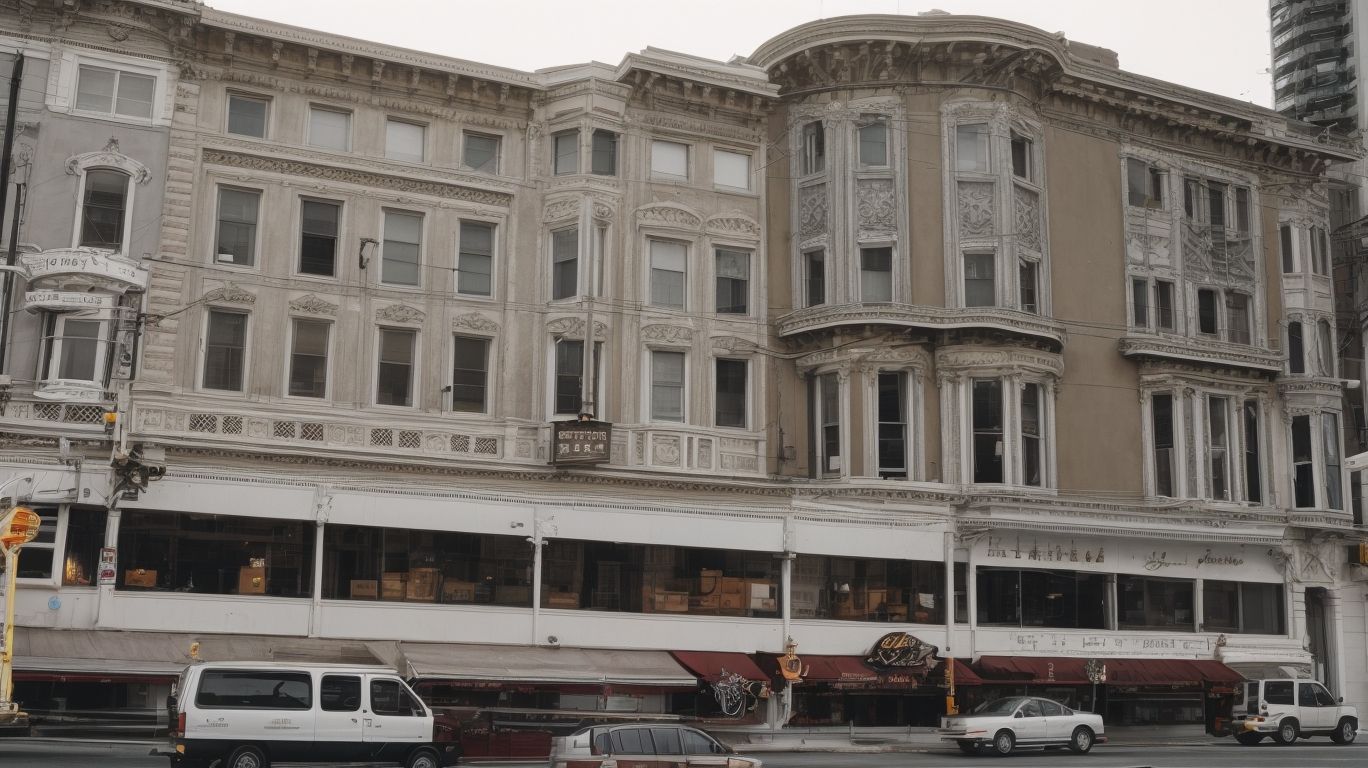
Navigating Soft-Story Retrofit Ordinances: San Francisco vs. Los Angeles Compared
Soft-story buildings are characterized by open spaces at the ground level such as parking lots. These buildings are particularly vulnerable to earthquakes due to their structural weaknesses.
In response to this vulnerability, cities like San Francisco and Los Angeles have implemented soft-story retrofit ordinances to ensure the safety and stability of these buildings.
This article will compare the approaches of these two cities, including the timeline for compliance, scope of buildings covered, required retrofit measures, and the cost and benefits of retrofitting.
If you own or occupy a soft-story building in these cities, understanding the differences between their ordinances is crucial for compliance and safety.
What is a Soft-Story Building?
A Soft-Story Building is a multi-story structure with a weak or open first floor that makes it susceptible to structural failure during seismic activity. This necessitates seismic retrofitting to comply with building codes and enhance structural resilience.
Soft-story buildings typically have large open spaces on the ground floor, such as parking garages or storefronts. However, this design can make them vulnerable to lateral forces during an earthquake, leading to instability. The difference in stiffness between the first and upper floors can cause excessive sway and potential collapse.
To address this issue, retrofitting is necessary. This involves strengthening the first floor through the addition of shear walls, braces, or moment frames. These measures help redistribute the seismic forces and improve the overall stability of the building.
Building codes and regulations for retrofitting play a crucial role in mitigating the risks associated with soft-story buildings and ensuring the safety of occupants and surrounding areas during seismic events.
Why are Soft-Story Buildings Vulnerable to Earthquakes?
Soft-Story Buildings are vulnerable to earthquakes due to their structural design, which creates a heightened seismic vulnerability, necessitating thorough risk assessment and structural analysis to determine the potential impact of seismic events on these structures.
The open ground floor spaces of soft-story buildings are typically used for parking, but this can lead to increased instability during an earthquake. This is because the upper floors lack adequate lateral support, making them more susceptible to damage and collapse. As a result, occupants are at significant risk. To address this design flaw, it is crucial to conduct a thorough structural analysis and implement appropriate retrofitting measures to enhance the building’s seismic resilience.
What is a Soft-Story Retrofit Ordinance?
A Soft-Story Retrofit Ordinance is a legislative mandate issued by municipal authorities, outlining specific requirements and deadlines for the seismic retrofitting of Soft-Story Buildings to ensure compliance with municipal codes and retrofit compliance deadlines.
These ordinances are designed to address the vulnerability of soft-story buildings, which are characterized by weak ground floors compared to upper stories, making them prone to collapse during earthquakes.
By implementing these mandates, local governments aim to enhance the structural stability of buildings, reduce the risk of seismic hazards, and ultimately protect public safety. Through the integration of municipal codes, these ordinances set clear guidelines for property owners, engineers, and construction professionals to adhere to, thereby ensuring that the retrofitting process aligns with safety standards and best practices in structural engineering.
The establishment of retrofit compliance deadlines within these ordinances incentivizes timely action and prioritizes the structural integrity of soft-story buildings, contributing to overall community resilience in seismic-prone regions.
What is the Purpose of Soft-Story Retrofit Ordinances?
The purpose of Soft-Story Retrofit Ordinances is to prioritize community safety by imposing legal obligations on building owners and property managers. These ordinances aim to ensure the implementation of necessary seismic retrofitting measures to enhance structural resilience and mitigate seismic hazards.
They specifically target soft-story buildings, which are susceptible to collapse during earthquakes. By requiring retrofits, these ordinances contribute to the overall safety and stability of buildings, thus safeguarding the lives and well-being of occupants and passersby.
The enforcement of these ordinances fosters a proactive approach to seismic risks, encouraging property owners to take responsibility for the safety and resilience of their buildings. This ultimately leads to a more resilient and secure built environment.
How Do San Francisco and Los Angeles Approaches Differ?
San Francisco and Los Angeles exhibit distinct approaches to Soft-Story Retrofit implementation, each governed by the unique regulations and processes enforced by their respective city planning departments, warranting a comparison of their seismic retrofitting strategies and enforcement mechanisms.
In San Francisco, the Soft-Story Retrofit program encompasses a comprehensive set of regulations and guidelines, reflecting the city’s proactive approach to seismic safety. The city planning department plays a pivotal role in overseeing the implementation of retrofitting measures, collaborating with building owners and engineering professionals to ensure compliance.
On the other hand, Los Angeles has adopted a phased approach to retrofitting, focusing on identifying and prioritizing vulnerable buildings. The city’s enforcement mechanisms are designed to progressively address the retrofitting needs, aligning with the diverse seismic vulnerabilities across different neighborhoods.
Timeline for Compliance
The timeline for compliance with Soft-Story Retrofit Ordinances encompasses the specified retrofit compliance deadlines, prioritizing adherence to regulatory mandates and mitigating the risk of permit violations.
This adherence to compliance timelines is crucial to ensure the safety and structural integrity of buildings in high-seismic zones. Failure to meet these deadlines can lead to severe repercussions, including potential fines, legal actions, and the issuance of permit violations.
Timely retrofit implementation is of paramount importance, as it not only safeguards occupants and neighboring properties but also fosters a resilient built environment. By prioritizing and expediting retrofit efforts, property owners and managers contribute to overall community safety and disaster preparedness.
Scope of Buildings Covered
The scope of buildings covered under Soft-Story Retrofit Ordinances encompasses diverse categories, including those situated within seismic hazard zones and historical buildings, necessitating comprehensive retrofit assessments and interventions.
Such regulations serve to safeguard both contemporary and historical structures from the potential impact of seismic activities. It is essential for property owners to be aware of the specific requirements that apply to different types of buildings, ensuring the appropriate measures are taken to enhance their resilience.
Tailored retrofit assessments are crucial in identifying the unique vulnerabilities of each structure, enabling targeted interventions that prioritize safety and structural stability. This tailored approach acknowledges the diverse nature of buildings and the significance of preserving historical architecture while mitigating seismic risk.
Required Retrofit Measures
The required retrofit measures mandated by Soft-Story Retrofit Ordinances encompass a spectrum of interventions, including structural upgrades and foundation strengthening, aimed at fortifying the structural integrity of vulnerable buildings and ensuring seismic resilience.
These retrofit measures are designed to address specific vulnerabilities associated with soft-story buildings, focusing on strengthening weak structural elements, such as ground-level parking and open storefronts.
The ordinances may include requirements for enhanced lateral bracing, foundation bolting, and the installation of energy dissipation devices to minimize the impact of seismic forces. These interventions aim to improve the overall stability and performance of buildings during earthquakes, ultimately enhancing public safety and reducing potential damage.
Cost of Retrofitting
The cost of retrofitting Soft-Story Buildings necessitates thorough cost analysis and financial planning, often supported by retrofit financing options to facilitate the implementation of essential structural upgrades and seismic resilience measures.
This process involves a detailed examination of the current financial standing of the building owner or management, assessing the potential costs associated with retrofitting, and identifying suitable financing options.
Understanding the long-term financial benefits and potential returns on investment from retrofitting is crucial in making informed decisions. There are various retrofit financing options available, including loans, grants, and incentives from government programs or financial institutions, which can alleviate the financial burden. An in-depth financial assessment will also aid in determining the most cost-effective retrofitting measures and establishing a comprehensive financial plan for the implementation of structural upgrades and seismic resilience measures.
Incentives and Assistance Programs
Incentives and assistance programs play a pivotal role in promoting Soft-Story Retrofit compliance. These programs encompass retrofit incentives and public safety initiatives designed to foster building owner participation and community resilience.
Many programs are available to building owners to help with seismic upgrades. These programs offer financial incentives and expert assistance to encourage owners to improve the structural integrity of their properties. Grants and tax credits are commonly provided to support retrofit initiatives, motivating owners to undertake necessary upgrades. Additionally, public safety initiatives and educational campaigns are integrated to raise awareness about the importance of retrofitting. This collaborative approach empowers stakeholders to actively engage in safeguarding their buildings and neighborhoods, ultimately fostering a more resilient built environment.
What are the Benefits of Soft-Story Retrofitting?
Soft-Story Retrofitting offers a range of benefits, including increased safety for occupants and protection of property values, aligning with compliance to local regulations and fostering community resilience.
This proactive approach to structural reinforcement not only mitigates the risk of collapse during seismic events, but also presents a long-term investment in the preservation of the built environment.
By addressing structural vulnerabilities, such retrofitting measures contribute to the overall resiliency of a community, enhancing its ability to withstand and recover from natural disasters. This, in turn, can bolster the confidence of residents and businesses in the stability and safety of their surroundings.
Increased Safety
The foremost benefit of Soft-Story Retrofitting is the enhanced seismic resilience and increased safety it provides to occupants, often complemented by proactive tenant notification to raise awareness of seismic preparedness.
This proactive approach to seismic preparedness ensures that building occupants are well-informed and prepared for potential seismic events. By addressing the structural vulnerabilities of soft-story buildings, the retrofitting process significantly reduces the risks associated with collapse or structural damage during earthquakes.
The increased safety resulting from Soft-Story Retrofitting not only safeguards the lives of building occupants but also minimizes the potential for extensive property damage, thereby contributing to overall community resilience and well-being. The combined efforts of seismic retrofitting and tenant notification initiatives play a critical role in enhancing disaster preparedness and mitigating the impact of seismic events.
Protection of Property Value
Soft-Story Retrofitting safeguards property values by integrating resilient retrofit design measures, serving as a proactive strategy endorsed by property managers to fortify real estate assets and ensure long-term value preservation.
This approach holds immense significance in protecting buildings from potential damage caused by seismic events, shifting the focus towards structural integrity and tenant safety.
Retrofit design considerations such as load-bearing requirements, foundation reinforcement, and lateral bracing play a pivotal role in strengthening the building’s overall resilience. Property managers play a crucial role in promoting awareness among tenants and stakeholders about the importance of soft-story retrofitting and can proactively initiate the process to safeguard their real estate assets from structural vulnerabilities.
Compliance with Local Regulations
Soft-Story Retrofitting ensures compliance with local regulations, encompassing permit fees and building inspections, reflecting a commitment to meeting legal obligations and upholding building code standards for structural resilience.
This process is crucial for ensuring that buildings are safe and resilient, especially in areas prone to seismic activity. By obtaining the necessary permits and undergoing regular building inspections, property owners can guarantee that their structures meet the required safety standards.
Complying with building codes also ensures that the overall infrastructure of a city or town is built to withstand potential hazards, safeguarding lives and properties. Therefore, Soft-Story Retrofitting plays a vital role in bolstering the structural integrity of buildings and enhancing community safety.
What are the Steps to Take for Soft-Story Retrofitting?
Embarking on Soft-Story Retrofitting involves a series of sequential steps, including obtaining a structural evaluation, securing necessary permits, engaging licensed retrofit contractors, and completing the prescribed retrofitting measures to ensure structural resilience.
Structural engineers play a pivotal role in the initial phase, conducting a thorough assessment to identify the existing vulnerabilities. This evaluation forms the basis for the retrofitting strategy.
Once the structural evaluation is complete, the focus shifts to obtaining the essential permits from local authorities for the retrofit process. Retrofit contractors then enter the picture, leveraging their expertise to implement the recommended solutions, such as adding shear walls, braces, or other retrofit measures to bolster the building’s resistance to seismic forces.
The permit acquisition process is instrumental in ensuring compliance with building codes and regulations, underscoring the significance of meticulous planning and effective collaboration among all stakeholders involved.
Get a Structural Evaluation
The initial step in Soft-Story Retrofitting is to procure a comprehensive structural evaluation to assess the existing vulnerabilities and conduct a thorough risk assessment, guiding the subsequent retrofit design and implementation.
This evaluation plays a crucial role in identifying weaknesses in the building’s structure, such as inadequate lateral support or weak load-bearing elements, which could lead to failure during seismic events.
The risk assessment then helps prioritize the areas that require immediate attention, ensuring that the retrofit design and implementation effectively target the most critical structural vulnerabilities. By integrating these evaluations, building owners and engineers can make informed decisions about retrofit strategies to enhance the overall safety and resilience of the structure.
Obtain Necessary Permits
Securing the necessary permits forms a pivotal aspect of Soft-Story Retrofitting, involving adherence to the permitting process and construction standards to ensure regulatory compliance and the authorization of retrofit activities.
Property owners and developers must navigate the permitting process carefully to obtain necessary approvals for retrofitting. This includes submitting detailed documentation outlining the proposed plans and ensuring they comply with local construction standards and regulations. Adhering to these standards not only ensures the safety and structural integrity of the building, but also demonstrates commitment to regulatory compliance – a crucial factor in obtaining permits for Soft-Story Retrofitting projects.
Hire a Licensed Contractor
Engaging a licensed contractor is essential for Soft-Story Retrofitting. This ensures compliance with designated construction timelines and efficient implementation of retrofit measures to fortify the building’s structural resilience.
Their expertise and knowledge of local building codes and regulations play a crucial role in executing the retrofit seamlessly. Licensed professionals bring a wealth of experience in structural engineering and construction, ensuring that the retrofit measures are effectively implemented within the stipulated timeline. Their involvement also guarantees that the retrofitting process adheres to industry standards, minimizing the risk of structural instability and enhancing the overall safety and durability of the building.
By entrusting the project to licensed contractors, property owners can confidently navigate the complexities of Soft-Story Retrofitting and achieve long-term structural integrity.
Complete Retrofitting Measures
The final step of Soft-Story Retrofitting involves the comprehensive completion of retrofitting measures, followed by rigorous verification and building inspections to ensure the successful fortification of the building’s structural integrity and seismic resilience.
This phase marks the culmination of the retrofitting process. Structural enhancements, such as bracing and strengthening of weak storylines, are finalized to withstand seismic forces.
The retrofit verification involves thorough assessments by qualified engineers. They inspect the building for compliance with seismic codes and standards. Building inspections play a critical role in confirming that the retrofit measures have been implemented effectively, ensuring the safety and stability of the structure during seismic events.




No Comments